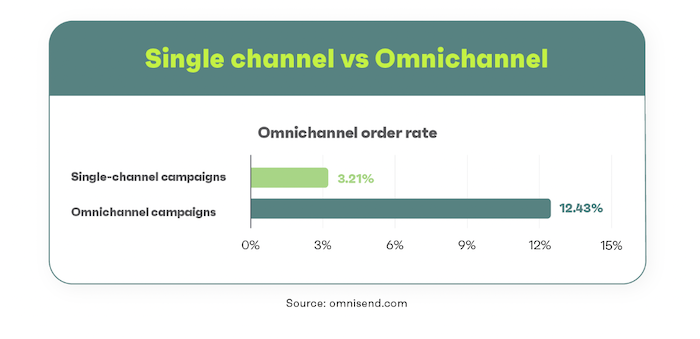How to Run an Omnichannel E-Commerce Marketing Campaign

By Neil Patel
Think back to the last time you made a big online purchase. If you’re like most consumers, there’s a good chance you interacted with the brand multiple times on different channels using different devices before you paid.
The customer journey isn’t straightforward anymore (if it ever was). It’s a meandering path where customers visit brands on different platforms before converting. To successfully target and convert consumers across every channel and platform, you need a unified marketing strategy. That’s the crux of an omnichannel e-commerce marketing campaign.
This article walks you through precisely what omnichannel e-commerce looks like, why it is crucial for e-commerce brands, and how you can create your own killer omnichannel e-commerce marketing campaign.
What Is Omnichannel E-commerce?
Omnichannel e-commerce is a marketing approach that creates a unified customer experience across multiple platforms. Specifically, omnichannel retailers deliver the same experience across every channel and create a seamless experience that transcends individual platforms.
This is different from multichannel e-commerce, where brands sell across different channels but offer different experiences. While consumers may be able to shop on social media, a website, and a brick-and-mortar store, they can’t move seamlessly between them.
There is one other form of commerce: single-channel e-commerce. This is when brands only sell through one channel. That could be a traditional store, an online shop or a marketplace like Amazon. This approach limits brands to just one platform, which can be devastating if that platform makes changes.
With omnichannel e-commerce, customers hop from device to device, or platform to platform during the conversion process. As a brand, you need to keep up.
Why Is an Omnichannel E-commerce Strategy Important?
An omnichannel e-commerce experience sounds better than a multichannel or single-channel experience, right?
That’s reason enough to adopt an omnichannel approach, but it’s not the only reason you should. Omnichannel e-commerce provides a better customer experience and allows your brand to take advantage of new platforms, increase customer retention rates, and boost sales.
Omnichannel E-Commerce Strategies Provide a Better Customer Experience
Google reports that 85 percent of online shoppers start the purchase process on one device and finish it on another. Why does that matter?
Convenience rules when it comes to e-commerce; just ask Amazon. It’s not enough to offer a great selection, competitive pricing, and next-day delivery, however. Brands must show up where their customers are and offer a seamless experience when they switch devices or channels.
Take off your marketer’s cap for a second and remember that most consumers don’t view their shopping experience as separated. It’s all one journey to them, and that’s exactly how an omnichannel e-commerce experience approaches it.
As you can see from the infographic by Invesp below, customers can use an omnichannel experience in several different ways. They can:
- check the availability of products
- reserve or buy items and pick them up in-store
- have constant access to their profile information
- enjoy a personalized shopping experience regardless of platform
Source:: Kiss Metrics Blog







